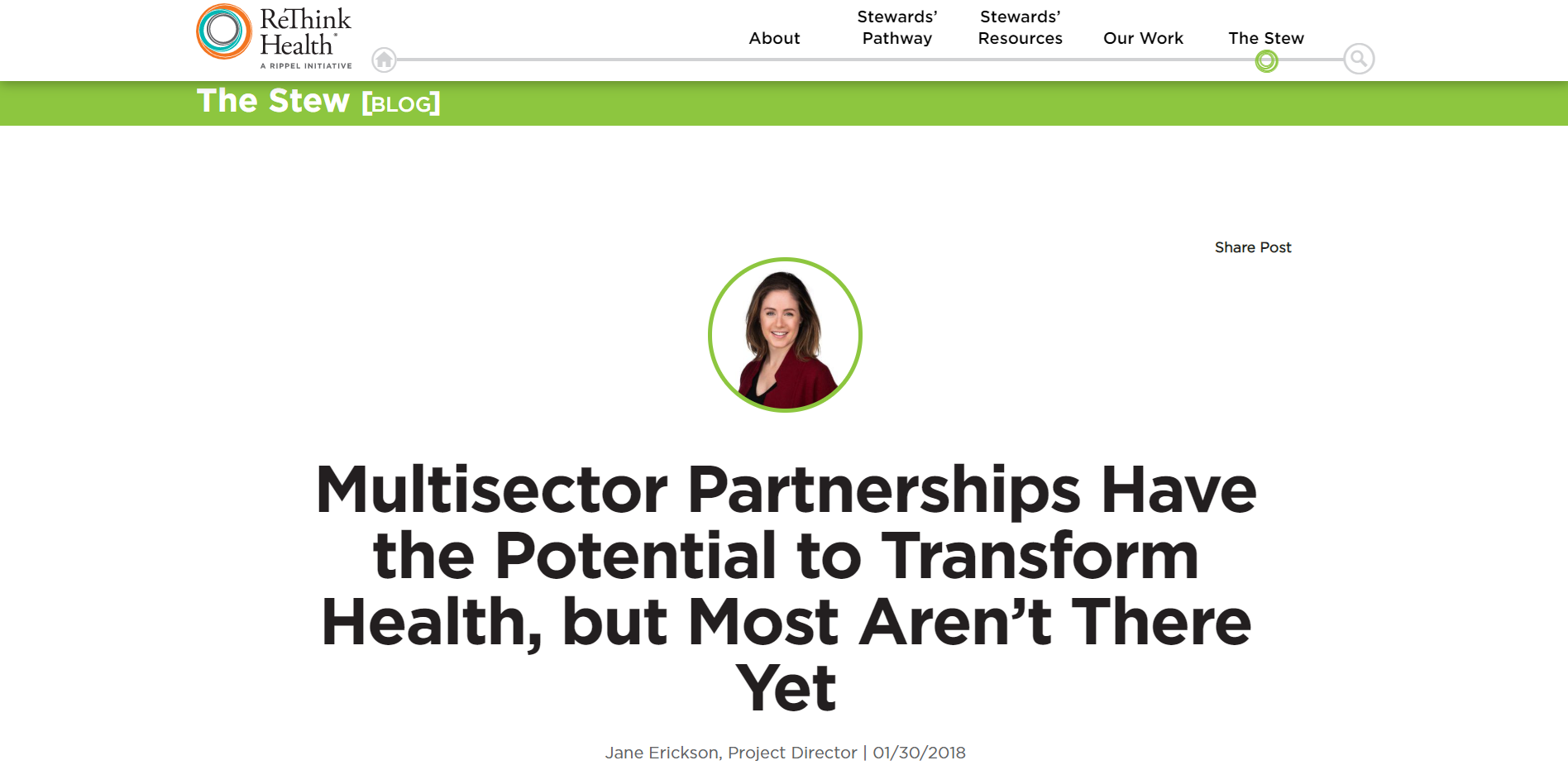
Multisector Partnerships Have the Potential to Transform Health, but Most Aren't There Yet
This blog post offers a systematic assessment of the more advanced multi-sector partnership for health. The blog highlights Central Oregon Health Council, a unique nonprofit organization that plays a critical role in improving the health of residents across Crook, Deschutes, and Jefferson counties.
Key findings:
- Many groups are lacking involvement from key sectors, including health care payers and economic development organizations.
- Their infrastructure to coordinate collaboration is often fragile and underfunded.
- Often these partnerships focus on only short-term initiatives addressing a specific disease or health outcome, and they are disconnected from other collaborative efforts to improve health in their community.
- Just a few of these well-established partnerships are focused on an integrated strategy to improve health care delivery, move beyond fee-for-service payment models, enable healthier behaviors, and expand economic opportunities.
- Finally, these partnerships mostly rely on unsustainable, short-term grant funding, making it challenging for them to plan beyond a two- to three-year time horizon (a longer-term time frame is a necessity when pursuing systemic change).
Researchers concluded that multi-sector partnerships will develop more quickly when the conditions are in place to catalyze their progress.

 Back to Resources
Back to Resources